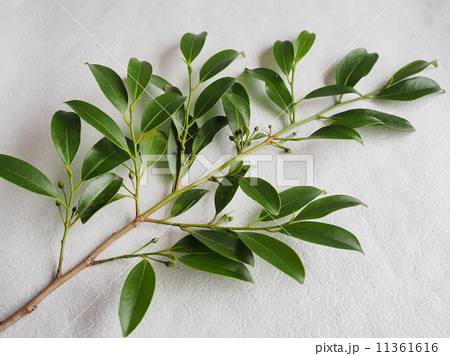▼CONTENTS
- Mt Aso & Takachiho
- Gokanosho
- Kumamoto city & Gokanosho
- Mt Aso
- Takachiho & Mt Aso
- Takachiho & Mt Aso
- Around Aso
- Gokanosho
- Gokanosho, Yatsushiro & Kumamoto
- Kumamoto & Gokanosho
- Kumamoto & Gokanosho
- Yatsushiro & Gokanosho
- Takachiho & Mt Aso
五家荘緑紅 Your English speaking tour guide
▼CONTENTS
Takachiho Tour
Takachiho tour & Beppu tour
Kumamoto tour
Yatsushiro & Gokanosho tours
Amakusa tour, Aso tour and Yatsushiro & Gokanosho tours in 4 days
Kuju & Aso Tour
Aso tour
Aso & Kurokawa tour, Takachiho tour
Gokanosho tour, 2-night stay at Heike-so
Kumamoto tour
JMA, Japan Meteorological Agency, announced the rainy season was over on 13 July in the southern Kyushu and 20 July in the northern Kyushu. We are happy to welcome the beginning of summer! But be careful, these days summers are getting much hotter than what they used to be. In my childhood, summers were like 30 – 32 degrees Celsius (86 – 90 F) at the highest air temperature, but in the recent years it can reach 36 – 38 C (97 – 100 F) . So those of you who are planning to visit Japan should be well prepared for the heat, you can get heatstroke. To prevent it, you should wear a hat / cap, sip water / sport drink, take a break in the shade once in a while, for example. Moreover, it’s so muggy, steaming hot until the mid September. You should also prepare spare clothes.
This year’s Tsuyu was announced that it had started on 8 Jun, according to JMA (Japan Meteorological Agency). But it was so strange we were suffered of lack of rain for nearly two weeks just after the announce was made. Normally, or I should say in the past, it was quite common that we had successive rainy days starting from early or mid June to mid July. But these days, it seems we have a different situation maybe because of the climate change. When it rains it often pours down causing landslides and floods, on the other hand when it doesn’t rain we suffer from water shortages. In Gokanosho, there are some fish farmers who need a great deal of water for Yamame, river trout, farming. They said it was so close that they could have had the fish died from water shortage. The weather forecast says we are going to have rainy days again between 4 – 6 July according to JMA. I hope the rain will wet the mountains enough to cultivate the trees for beautiful couloured leaves in Autumn.
Finally, I have a chance to write about our proud ritual, Hagi Kagura. Hagi is one of five villages of Gokanosho. It’s a small populated village with 7 houses and only 11 residents, where Heike-so and Sakura-so Minshuku accommodations are located. We celebrated a Shinto festival on 11 April to say a prayer to the gods of mountain thanking for bringing peace to our life and for the safety of our every day job by performing sacred dances. The dances is said to have been handed down from Takachiho and one of the neighbouring villages Shiiba in the 17th century, so we can find some similarities between those dances. I am also a member of Hagi Kagura even though I am not a resident of Hagi village, the dancer s had to be the residents of Hagi originally. However, due to lack of residents, they asked me to join in this and I was glad to be part of them. I dance and play a drum as well depending on the dance. in this ceremony, a Shinto priest say a prayer to the gods first and we offer sacred branches of “Kami Sakaki” , then we are ready to show our dances to the gods. Ladies also perform the dances but we need to close the door to the main building where a goddess i sitting, because we believe she might feel jealous seeing ladies dancing. After the ceremony, we hold a party with all participants who are fans and friends of Gokanosho.
, then we are ready to show our dances to the gods. Ladies also perform the dances but we need to close the door to the main building where a goddess i sitting, because we believe she might feel jealous seeing ladies dancing. After the ceremony, we hold a party with all participants who are fans and friends of Gokanosho.
And please watch the digest of the Hagi Kagura as the following footage.
In telecommunication, Long-Term Evolution (LTE) is a standard for high-speed wireless communication for mobile phones and data terminals, based on the GSM/EDGE and UMTS/HSPA technologies. (from Wikipedia)
It’s a huge breakthrough, finally we said good-bye to very-low-speed wireless communication! LTE was introduced in Gokanosho today, by the Japan’s biggest telecommunication company Docomo. So travelers who are planning to visit Gokanosho are recommended to choose Docomo for the target of data roaming.
LTE ROCKS!!

A 14-minute film titled “Gokanosho -Lost In Time-, made by a team from Griffith University, Australia, is up on ABC iView until 10:00 am 22 Mar 2017. I performed on this film as kind of a storyteller. Though I made a lot of mistakes in speaking English, cos it was a total documentary through the whole filming process. We made no take-2, actually! Anyway, I am sure this film will help you learn about what Gokanosho is. Enjoy.
http://iview.abc.net.au/programs/grad-season-2017/ZW1096A005S00
Last year, we had a couple of French tourists visited in Gokanosho. I just helped them make a reservation for staying at a Minshuku – Japanese guesthouse -. They wrote down a brilliant blog about their journey and stay in Gokanosho. Thanks Sandrine and Florent! I wish I could write a composition as beautifully as you do.
https://www.smartrippers.com/fr/article/immersion-dans-le-japon-autrefois-a-gokanosho
What are we expecting in February? It’s Fukujuso! In English they are called “Yellow boots” or “Amur adonis”. So happy we have those beautiful flowers coming out right now up in a particular mountain in Gokanosho. The flowers have some beautiful language such as “Eternal Happiness”, “Bring Happiness” and so on. And they are strictly protected by prefectural laws to prevent them from being stolen by heartless people.
We went for Mt Iwaudo located in the southern area of Gokanosho to improve the trail for trekkers’ safety who are expected to visit very soon, and spread a net surrounding the colony of the Fukujuso flowers in order to protect them from wild deer. We were exhausted carrying heavy tools and materials, but it was nice seeing some beautiful flowers coming into bud.